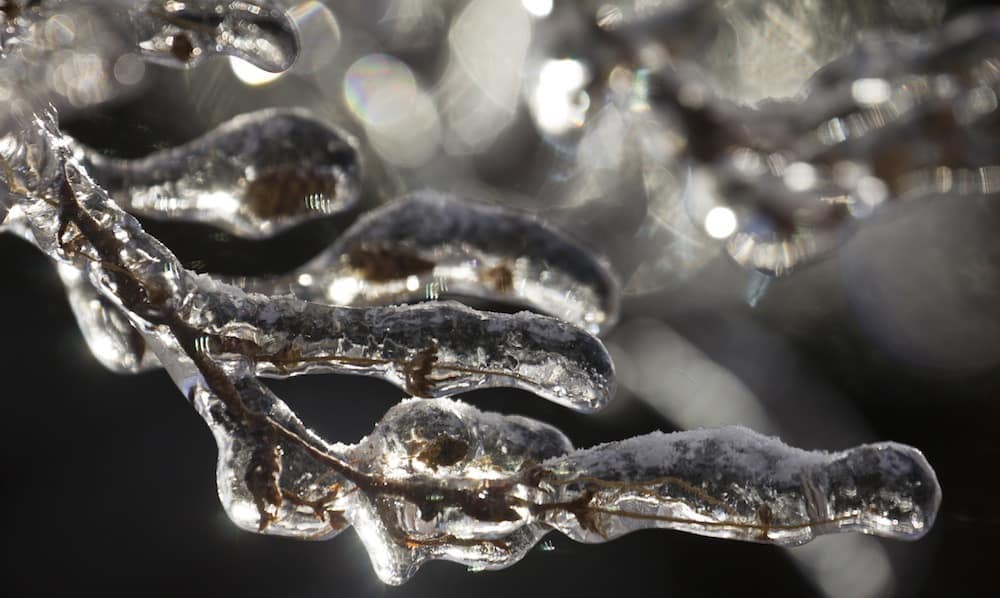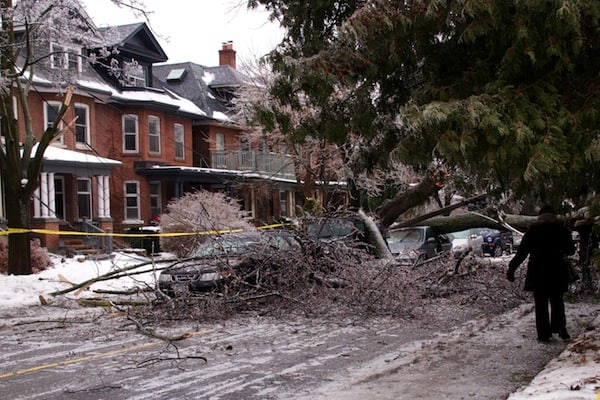“This is the universe putting us in our proper place,” joked Toronto’s deputy mayor, Norm Kelly, in the Toronto Star about the massive 2013 ice storm that froze the city in a thick layer of crystal clear ice. With approximately 300,000 Torontonians losing power at the height of the storm, much of the city’s tree canopy lost, and an estimated clean-up cost of $75 million, nature was indeed sending a furious message.
Ice storms can only happen under very specific conditions: a mass of warm air must be vertically sandwiched between two masses of cold air at below-freezing temperatures. The phenomenon begins at the cold layer on top. Snow is formed and begins to fall towards the ground. As it passes through the layer of warm air, it is heated and transformed into rain droplets. The rain droplets traverse the cold air mass near the ground and are consequently cooled to below-freezing temperatures while remaining in liquid state — a process called supercooling. The supercooled rain droplets — together known as freezing rain — then solidify into ice upon contact with any surface.
The accumulation of the ice weighs down, stresses, and can subsequently break tree branches and power lines leading to power outages. The recovery process can last for weeks as engineers are faced with the difficult task of repairing the power lines, which are sometimes located in remote areas such as ravines. Moreover, persistent wind and cold temperature can cause new outages and continue to aggravate the damage.
During the 2013 ice storm, both Sunnybrook Hospital and East General Hospital, as well as the city’s water pumping station, lost power. Fortunately, all the buildings had back-up generators to keep equipment and main functions in operation. Sunnybrook relied on five diesel-powered generators which were able to provide four megawatts of electricity. East York General also ran its back-up generator for up to 30 hours during the storm.
The 2013 icestorm was not the first one to have devastated Ontario. In 1998, five consecutive ice storms caused havoc in eastern Ontario, Quebec, and Nova Scotia, leaving at one point three million people without power and causing 35 deaths. Since then, improvements have been made in the power distribution infrastructure. After the 2013 ice storm, many have pushed for more frequent trimming of trees and improvement of communication processes to better inform and update citizens about an ice storm’s recovery progress.
As the city moves forward into a new year, Torontonians may remember the last weeks of 2013 as the time they were forced to brave the Canadian winter without heat or electricity. Nevertheless, many had heartening stories of spending time with family without the distractions of internet or cellphones, having Christmas dinner with neighbours, or playing board games under candlelight. For others, the cold dark nights were a humbling reminder of our dependence on electricity.
With files from the Toronto Star




